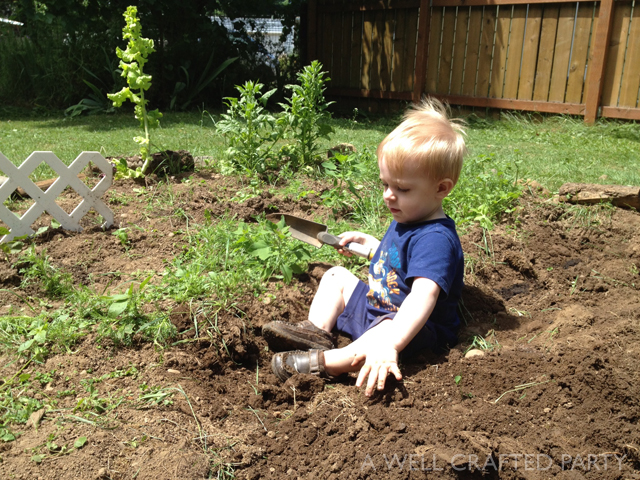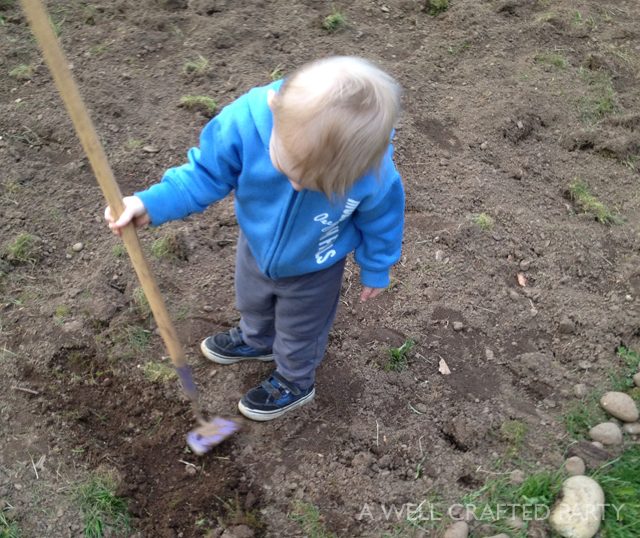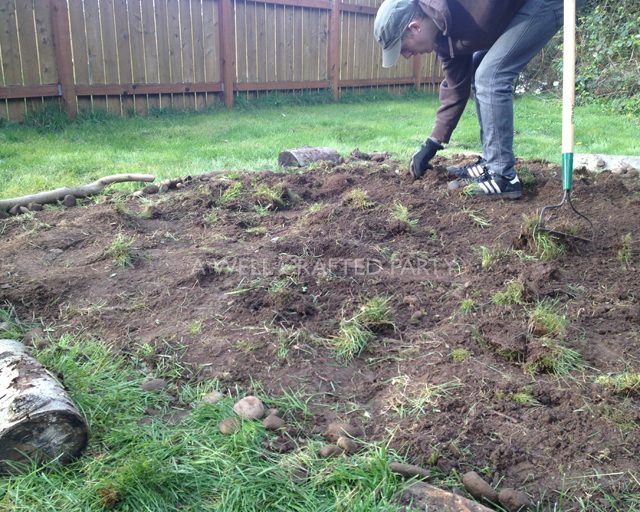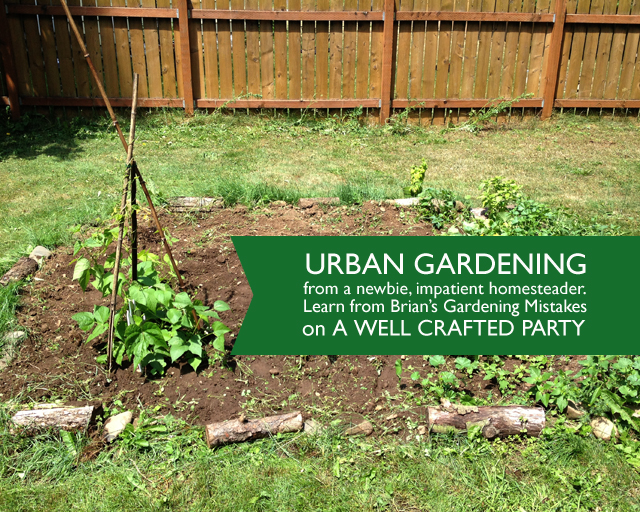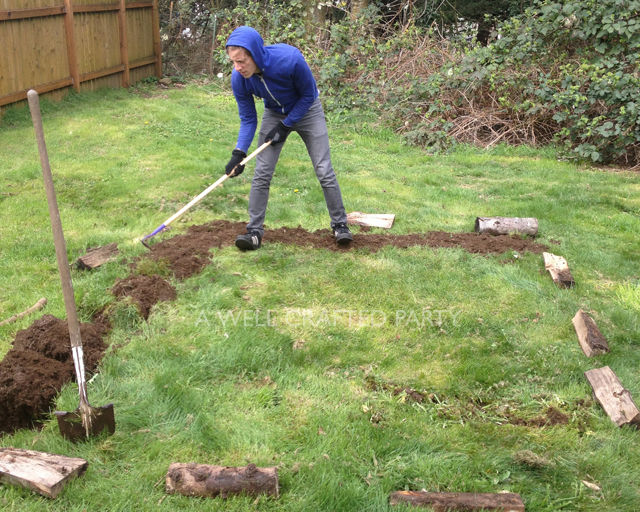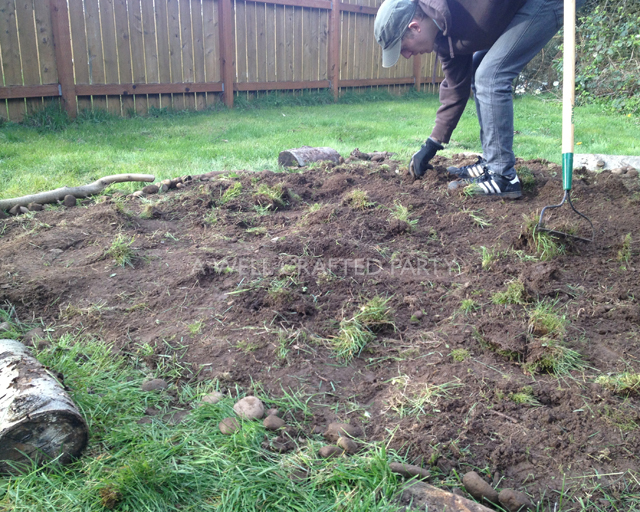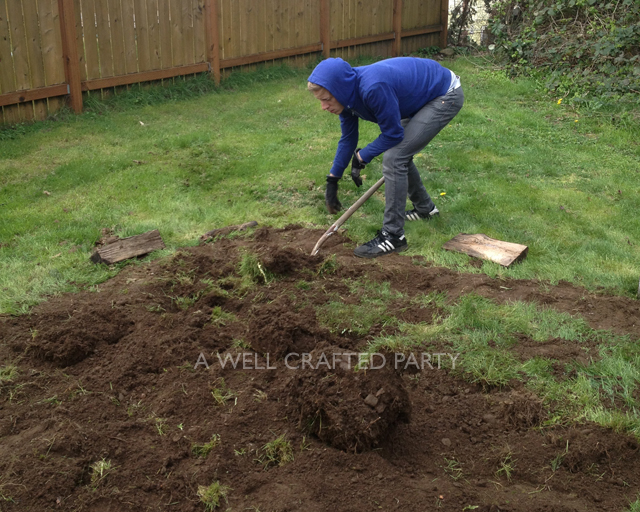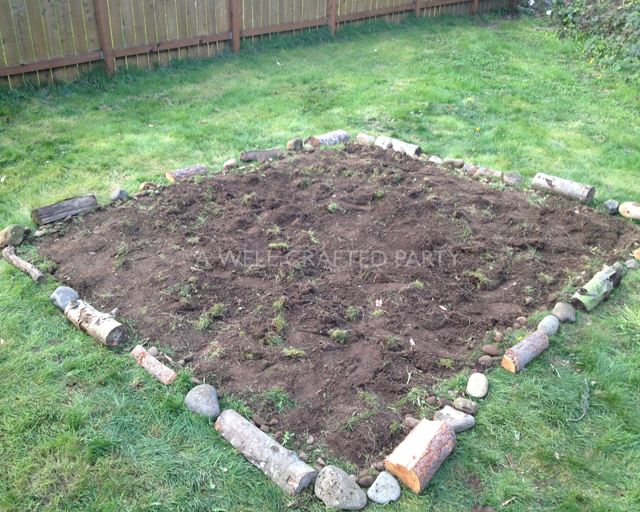To grow a plant, all you need is a seed or start, soil, sunlight, and salt-free water (I had to force an s in there somehow). Water is easy; it comes out of the faucet, and I point it at the garden plot until it’s soaked, twice a day. Sunlight’s easy, though I should have planned my plot for a sunnier patch of the yard. I’ll talk about seeds in another post, since first I want to tell you about our soil.
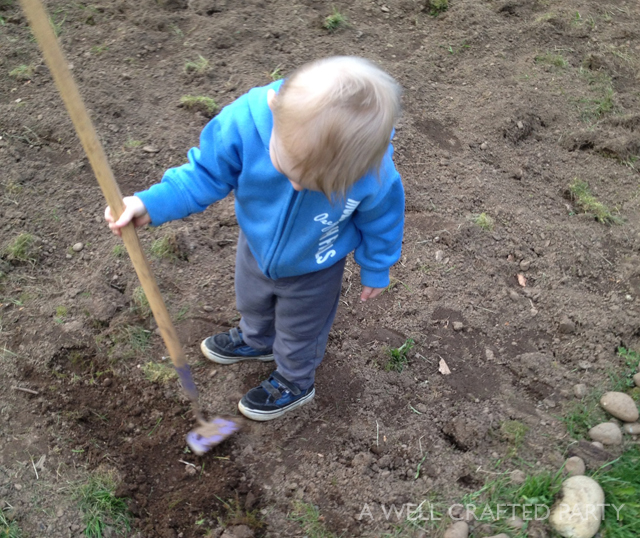
What I should have done
I should have tested the soil to check its pH balance, then correct it to a veggie conducive growing chemistry. I read (flipped through) the chapter in the veggie garden bible, Growing Vegetables West of the Cascades, by Steve Solomon, but I didn’t retain much. I remember something about loamy and silty soil being good, I think…but I never found out what category mine fell under. When digging our plot, my brother and I removed all the large rocks, anything bigger than a potato, and that alone filled a bucket. If we tried to get all the rocks smaller than that out, it would have taken days of back-breaking effort. Besides, my mom said a few small rocks help keep the soil wet, or something like that.
I also should have supplemented our poor dirt with some quality soil and compost. I started a compost pile last year, but didn’t really keep up with it (noticing a pattern yet?), so dumping non-decomposed – is it just called composed? – eggshells and coffee grounds wouldn’t do much to engender growth in my veggies. Maybe the pile will be decomposed by next spring’s garden.
What I actually did
Squat. I’m the lazy gardener. Sometimes I put in the minimal amount of effort to get the payoff that minimally satisfies. I am proud of the veggies we’ve eaten so far: a few handfuls of green beans, 3 cucumbers, lettuce, spinach, and basil. They were surprisingly tasty. To supplement the soil, I did buy two bags of organic soil and mixed that into the plot. For a garden the size of mine, I should have used six bags. We’ve gotten some edible veggies so far, but my neighbor’s garden makes me jealous. I guess the saying is true: you reap what you sow. And I’m a shoddy sower.
Luckily, I have amazing neighbors. Four out of the five houses around ours have gardens, and besides sharing their veggies, they’re sharing their tools and expertise. Check out this sharp-bladed contraption:
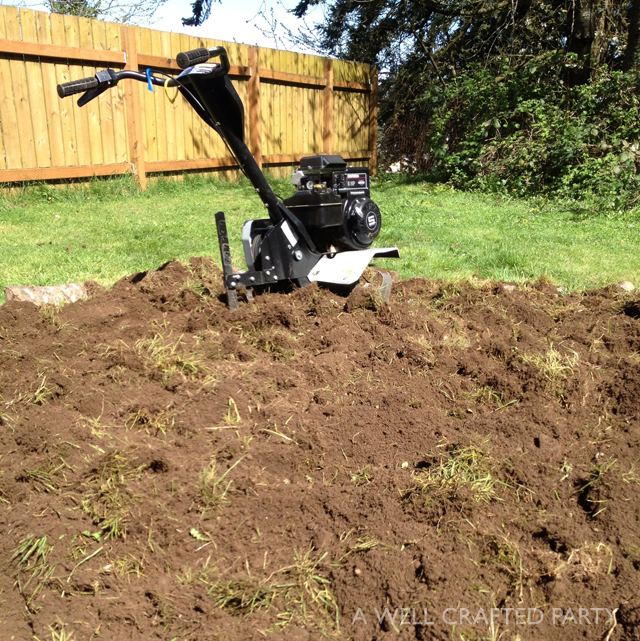
With just a few minutes of arm-jarring steering of the bucking rototiller, our plot was plowed. You can rent them cheaply from your local hardware store if you lack generous neighbors. Using the machine got what would have been 2 hours of effort done in 15 minutes. And remember my last post, where I said gardening should mostly be done by hand? Ha! I recommend using at least a gas rototiller to other lazy gardeners out there.
